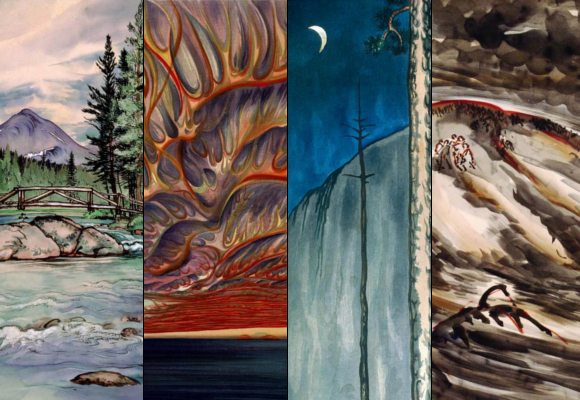
Chances are you’ve never heard of Chiura Obata. Well, all that changes now.
Chiura Obata was instrumental in bringing Japanese art styles like sumi-e and ukiyo-e to the West, but he’s not too well-known outside of the Japanese art world. He certainly deserves recognition however, not only for his place in art history, but for the difficulties he had to endure as well.
Obata was born in 1885 in Okayama Prefecture, Japan. He started learning traditional Japanese sumi-e painting at the age of seven, and as a teenager he apprenticed with several well-known artists in Tokyo, where he got his first taste of Western art styles.
At the age of 17, in 1903, Obata left Japan for the United States. He arrived in California where he worked as an illustrator and designer, but perhaps more notably also started painting landscapes throughout California, especially Yosemite, using traditional Japanese methods. His paintings blew the minds of Western artists at the time, and he was appointed as an instructor in the Art Department at the University of California, Berkeley in 1932.
But soon after Obata’s life hit a bump. During World War II, Obata, his wife, and over 100,000 other Japanese-Americans were forced into internment camps. But even there, Obata did his best to stay positive. He opened up an art school inside the relocation center he was assigned to, and there he helped hundreds of other prisoners find some hope and joy amidst their confinement.
After World War II, Obata was reinstated at UC Berkeley and promoted to associate professor of Art. In 1953 he became a naturalized U.S. citizen, and in 1965 he received the Order of the Sacred Treasure, 5th Class, Emperor’s Award, for his work helping to improve cultural understanding between the United States and Japan. He continued teaching art and leading tours of Americans to Japan until he died in 1975 at age 90.
Want to see how Obata viewed America? Take a look at some of his paintings:
▼ A sumi/watercolor rendition of Dana Creek in Yosemite Park, California.
▼ A colored woodblock print of Death’s Grave Pass and Tenaya Peak, also in Yosemite.
▼ Color woodblock print of El Capitan in Yosemite Valley.
▼ The Evening Moon in a color woodblock print.
▼ This abstract piece, Landslide, was created right after the bombing of Pearl Harbor.
▼ Silent Moonlight at Tanforan Relocation center shows Obata’s experience at the internment camp in haunting watercolor.
▼ This woodblock print, Life and Death, shows the ongoing cycle of nature.
▼ This sumi on silk painting shows a storm nearing the Yosemite government center.
▼ The Full Moon in Pasadena, California.
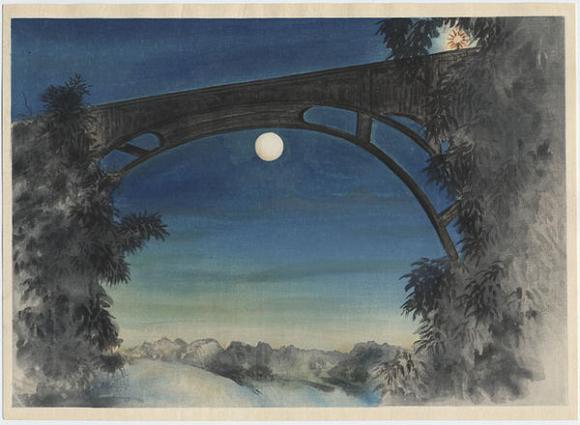
▼ And the Setting Sun in the Sacramento Valley.
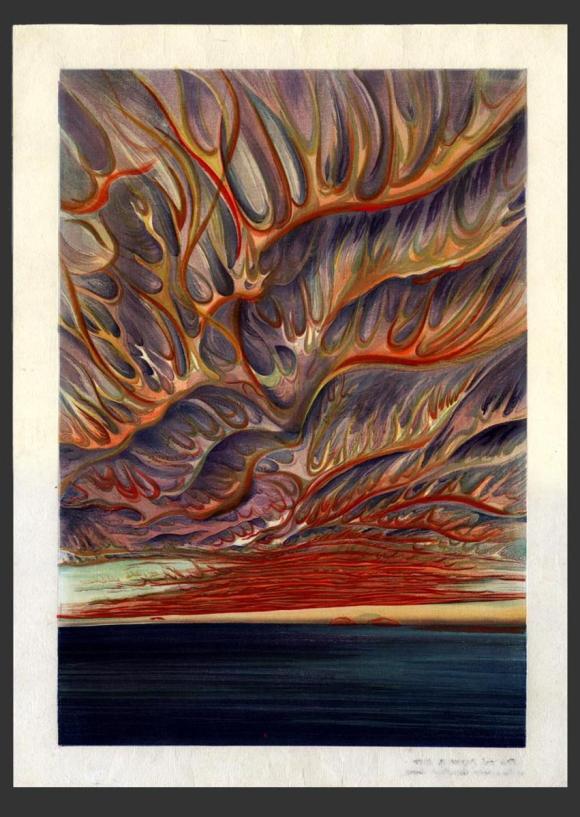
Obata’s work lives on to today, and his paintings are often shown at Yosemite Park and other museums around the world. His paintings are a symbol for the great things that can be accomplished when two cultures come together, as well as a reminder for the travesties that can occur when they clash.
Source: The Great Nature of Chiura Obata via Japaaan Magazine, Wikipedia
Insert images: The Great Nature of Chiura Obata
Featured/top image: The Great Nature of Chiura Obata, Japanese Woodblock Print Search (edited by RocketNews24)

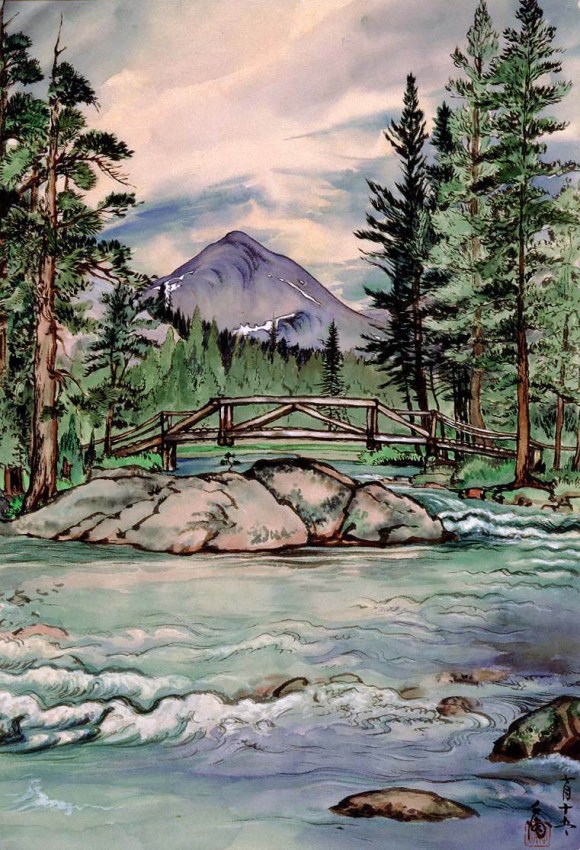
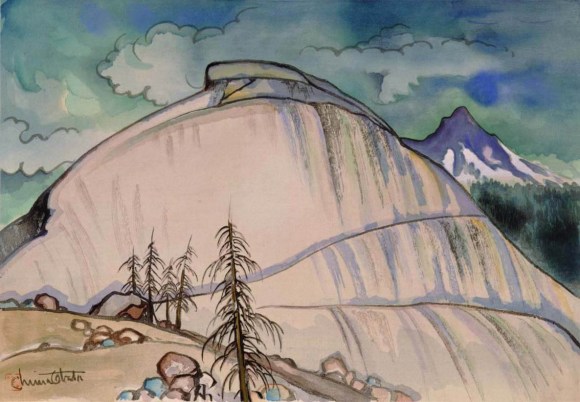
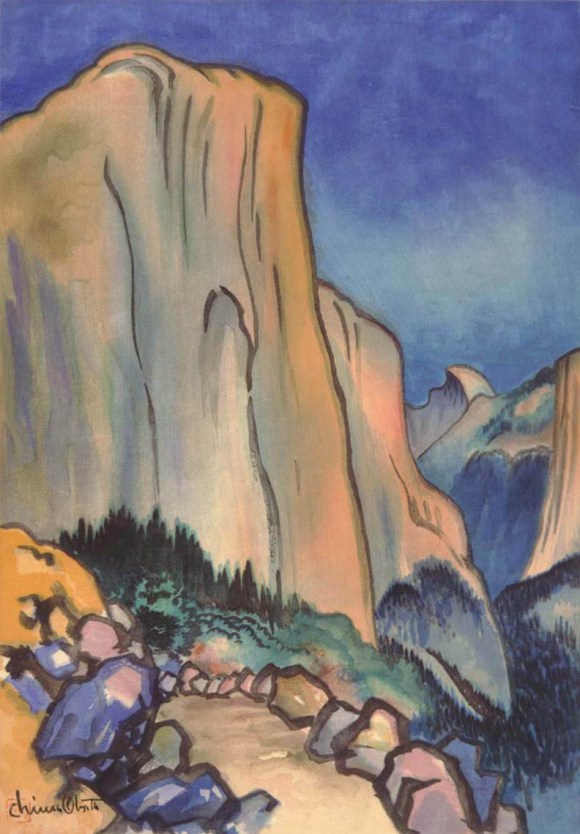
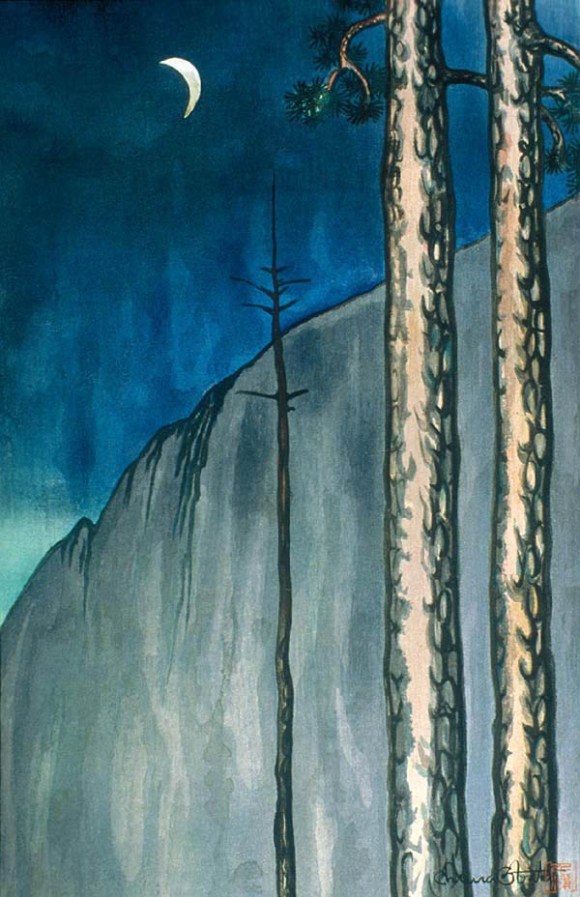
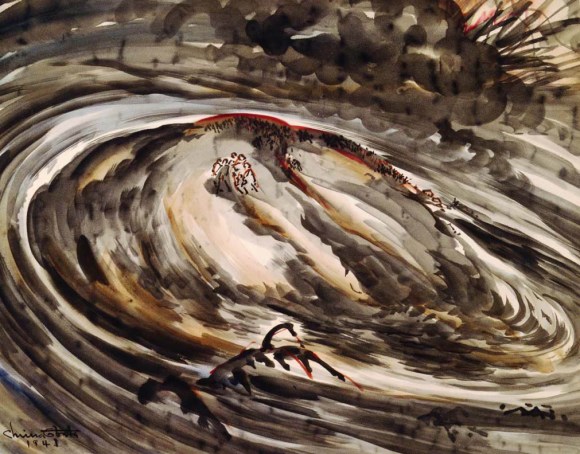
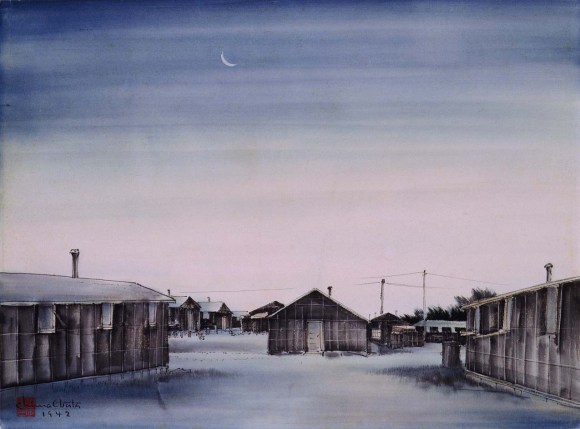
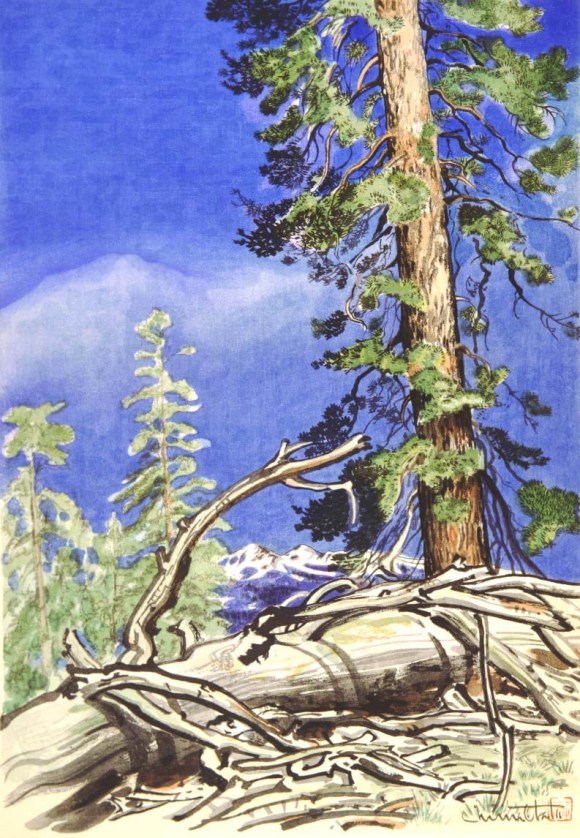
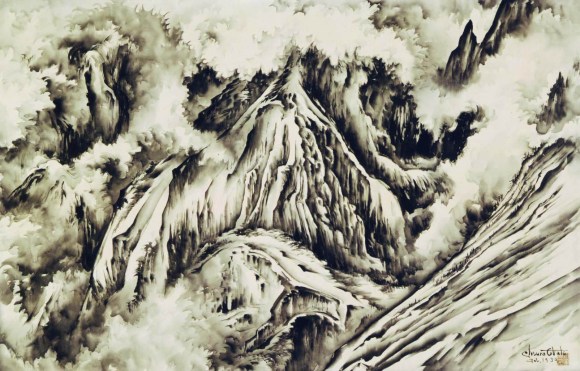
 Adorable, whimsical pictures of animals painted by old-school Japanese masters
Adorable, whimsical pictures of animals painted by old-school Japanese masters Miss Hokusai anime film receives distribution rights for North America, screenings begin in fall
Miss Hokusai anime film receives distribution rights for North America, screenings begin in fall Artist recreates famous Japanese ukiyo-e paintings using fine wines
Artist recreates famous Japanese ukiyo-e paintings using fine wines Macabre Japanese ukiyo-e reveal gothic side to art of the floating world【Pics】
Macabre Japanese ukiyo-e reveal gothic side to art of the floating world【Pics】 Artist’s photos from early 1900s Japan are little windows into another world 【Photos】
Artist’s photos from early 1900s Japan are little windows into another world 【Photos】 Japan now has potato chip-covered chocolate, and it’s amazing!【Taste test】
Japan now has potato chip-covered chocolate, and it’s amazing!【Taste test】 Japanese beef bowl chain Sukiya’s 2026 Smile Box lucky bag basically pays for itself
Japanese beef bowl chain Sukiya’s 2026 Smile Box lucky bag basically pays for itself Four Shinto shrines to pray for love at in Japan to start the New Year
Four Shinto shrines to pray for love at in Japan to start the New Year Japan’s number-one cosplayer Enako creates jaw-dropping crowd at Winter Comiket【Photos】
Japan’s number-one cosplayer Enako creates jaw-dropping crowd at Winter Comiket【Photos】 Japan would like to remind you that “emoji” has nothing to do with “emotion”
Japan would like to remind you that “emoji” has nothing to do with “emotion” Japanese department store rooftop is a secret oasis where you can escape the crowds in Tokyo
Japanese department store rooftop is a secret oasis where you can escape the crowds in Tokyo Our reporter takes her 71-year-old mother to a visual kei concert for the first time
Our reporter takes her 71-year-old mother to a visual kei concert for the first time Studio Ghibli’s Howl’s Moving Castle x Loewe collection is as magical as the anime movie
Studio Ghibli’s Howl’s Moving Castle x Loewe collection is as magical as the anime movie Original McDonald’s character Speedee makes a comeback in Japan
Original McDonald’s character Speedee makes a comeback in Japan Naked Run takes a confused grasp of streaking, puts it in a video game【Review】
Naked Run takes a confused grasp of streaking, puts it in a video game【Review】 Starbucks Japan ready to get Year of the Horse started with adorable drinkware and plushies【Pics】
Starbucks Japan ready to get Year of the Horse started with adorable drinkware and plushies【Pics】 Hayao Miyazaki says Happy New Year to Studio Ghibli fans with new art for Year of the Horse
Hayao Miyazaki says Happy New Year to Studio Ghibli fans with new art for Year of the Horse We found possibly the quietest Japanese-style hotel in Tokyo’s bustling Shinjuku district
We found possibly the quietest Japanese-style hotel in Tokyo’s bustling Shinjuku district Cup Noodle tries an authentic Jiro-style ramen, but something’s not quite right
Cup Noodle tries an authentic Jiro-style ramen, but something’s not quite right The best Starbucks Japan Frappuccinos we want to drink again in 2026
The best Starbucks Japan Frappuccinos we want to drink again in 2026 We revisited Sweets Paradise after a decade to see if Japan’s dessert buffet still delivers
We revisited Sweets Paradise after a decade to see if Japan’s dessert buffet still delivers That time Seiji called JASRAC to ask why he didn’t get paid royalties for his song being on TV
That time Seiji called JASRAC to ask why he didn’t get paid royalties for his song being on TV Japan’s oldest largetooth sawfish in captivity back on display in Mie Prefecture
Japan’s oldest largetooth sawfish in captivity back on display in Mie Prefecture Pizza Hut Japan’s hot lucky bags are perfect for a New Year’s pizza party
Pizza Hut Japan’s hot lucky bags are perfect for a New Year’s pizza party 7-Eleven Japan starts new temporary luggage storage service in over 300 branches
7-Eleven Japan starts new temporary luggage storage service in over 300 branches Disillusionment at Tsukiji’s tourist-target prices led us to a great ramen restaurant in Tokyo
Disillusionment at Tsukiji’s tourist-target prices led us to a great ramen restaurant in Tokyo Starbucks teams up with 166-year-old Kyoto doll maker for Year of the Horse decorations【Photos】
Starbucks teams up with 166-year-old Kyoto doll maker for Year of the Horse decorations【Photos】 Tokyo considering law requiring more trash cans following litter increase in heavily touristed area
Tokyo considering law requiring more trash cans following litter increase in heavily touristed area Tokyo’s Tsukiji sushi neighborhood asks tour groups to stay away for the rest of the month
Tokyo’s Tsukiji sushi neighborhood asks tour groups to stay away for the rest of the month Tokyo event lets you travel back in time, for free, to celebrate 100 years since Showa era start
Tokyo event lets you travel back in time, for free, to celebrate 100 years since Showa era start Japan may add Japanese language proficiency, lifestyle classes to permanent foreign resident requirements
Japan may add Japanese language proficiency, lifestyle classes to permanent foreign resident requirements Sanrio theme park in Japan announces plans to expand into a Sanrio resort
Sanrio theme park in Japan announces plans to expand into a Sanrio resort Stamina-destroying “Paralysis Noodles” are Tokyo’s newest over-the-top ramen innovation
Stamina-destroying “Paralysis Noodles” are Tokyo’s newest over-the-top ramen innovation Survey asks foreign tourists what bothered them in Japan, more than half gave same answer
Survey asks foreign tourists what bothered them in Japan, more than half gave same answer Japan’s human washing machines will go on sale to general public, demos to be held in Tokyo
Japan’s human washing machines will go on sale to general public, demos to be held in Tokyo Japan’s deadliest food claims more victims, but why do people keep eating it for New Year’s?
Japan’s deadliest food claims more victims, but why do people keep eating it for New Year’s? We deeply regret going into this tunnel on our walk in the mountains of Japan
We deeply regret going into this tunnel on our walk in the mountains of Japan Studio Ghibli releases Kodama forest spirits from Princess Mononoke to light up your home
Studio Ghibli releases Kodama forest spirits from Princess Mononoke to light up your home Major Japanese hotel chain says reservations via overseas booking sites may not be valid
Major Japanese hotel chain says reservations via overseas booking sites may not be valid Put sesame oil in your coffee? Japanese maker says it’s the best way to start your day【Taste test】
Put sesame oil in your coffee? Japanese maker says it’s the best way to start your day【Taste test】 No more using real katana for tourism activities, Japan’s National Police Agency says
No more using real katana for tourism activities, Japan’s National Police Agency says Starbucks Japan reveals new sakura drinkware collection, inspired by evening cherry blossoms
Starbucks Japan reveals new sakura drinkware collection, inspired by evening cherry blossoms Updated cherry blossom forecast shows extra-long sakura season for Japan this year
Updated cherry blossom forecast shows extra-long sakura season for Japan this year Japanese grandpa’s “for fun” ink paintings are so divine they’re now part of a beautiful temple
Japanese grandpa’s “for fun” ink paintings are so divine they’re now part of a beautiful temple Master Lego builder’s Great Wave off Kanagawa making move across ocean for Hokusai event【Photos】
Master Lego builder’s Great Wave off Kanagawa making move across ocean for Hokusai event【Photos】 Japanese art has never looked quite as beautiful as when it’s made out of Japanese beef【Photos】
Japanese art has never looked quite as beautiful as when it’s made out of Japanese beef【Photos】 Uniqlo Ukiyo-e Blue T-shirts: A cool-hued reinterpretation of some of Japan’s greatest paintings
Uniqlo Ukiyo-e Blue T-shirts: A cool-hued reinterpretation of some of Japan’s greatest paintings Cafe turns Japan’s most beautiful paintings into beautiful shaved ice dessert drinks【Photos】
Cafe turns Japan’s most beautiful paintings into beautiful shaved ice dessert drinks【Photos】 Three fantastic Japan-themed exhibits at Boston’s Museum of Fine Arts set to end soon
Three fantastic Japan-themed exhibits at Boston’s Museum of Fine Arts set to end soon Uniqlo celebrates sumo with new line of historical sumo art T-shirts【Photos】
Uniqlo celebrates sumo with new line of historical sumo art T-shirts【Photos】 Uniqlo brings cultural cuteness to Edo animals T-shirt line with Japanese history’s greatest artists
Uniqlo brings cultural cuteness to Edo animals T-shirt line with Japanese history’s greatest artists
Leave a Reply